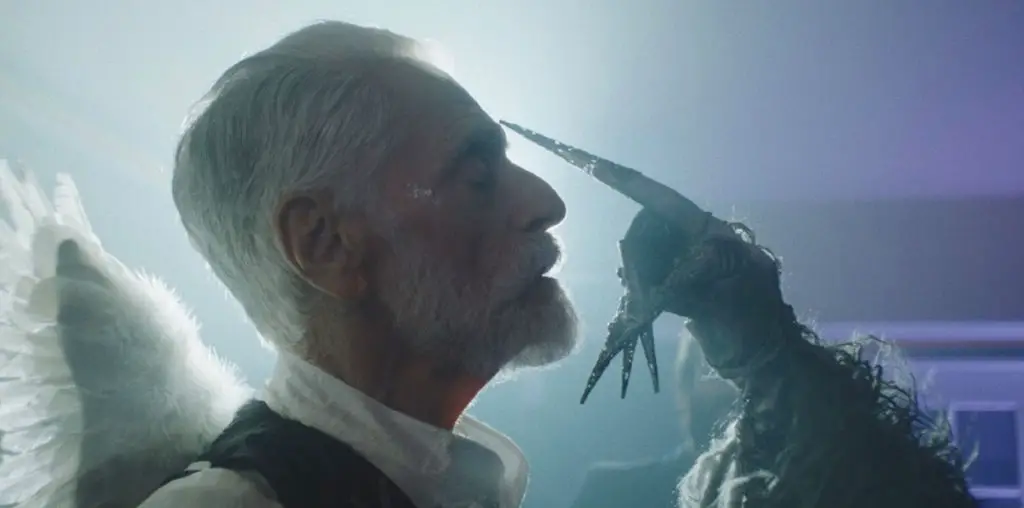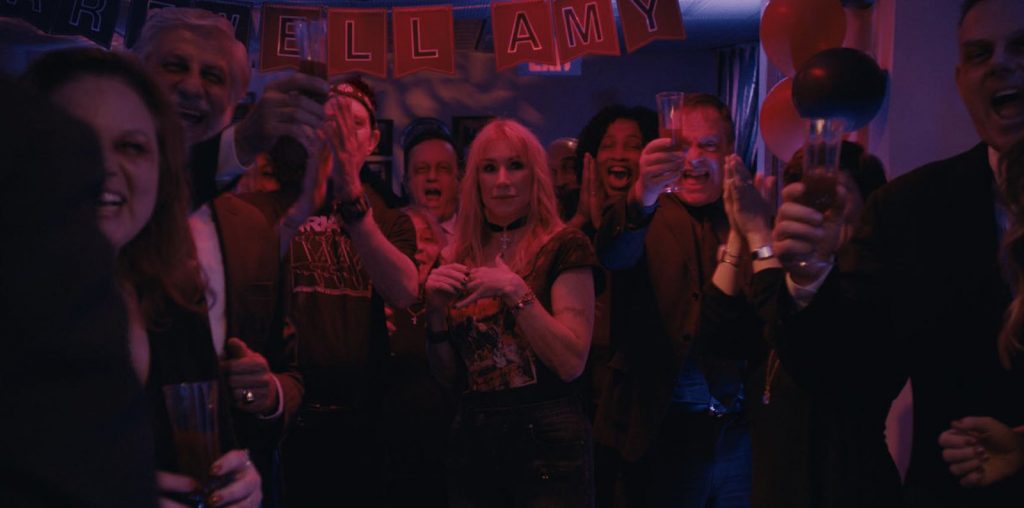
In a New York condominium, built from the decades-long career of the eminent composer/lyricist Stephen Sondheim, two couples (George Hearn and Carol Burnett as the socially and financially, but perhaps not emotionally, secure older couple, and John Barrowman and Ruthie Henshall as the young up-and-comers, entertaining thoughts of a romantic relationship) gather together for a cocktail party. Through the songs of Sondheim, there is tender romance (“Do I Hear A Waltz?”), rising passion (“Bang!”), infidelity (“Hello Little Girl”), the pains of a long marriage and love in general (“Everyday a Little Death”), bitter, yet quick-witted words fueled a little by alcohol (“The Ladies Who Lunch”), bitter words fueled by a crumbling marriage (“Could I Leave You”); all this and other songs that become quite a show when led by these actors.
And then there is Bronson Pinchot, Serge from “Beverly Hills Cop,” Balki on “Perfect Strangers.” He is the observer, introducing each song or cluster of songs with a single word, such as “party” before the second number, “Rich and Happy.” He’s first seen as the handyman of the household and later a maid, and in certain songs, serves as the singer, knowing all that these people are going through, just as it happens. In “Bang!”, as the younger man and woman circle each other, sexually unsure, but gradually warming to the idea, he sings about the moves they make. That’s always been the talent of Sondheim, an astute observer, giving musical attention to human emotion and exploring what it is that drives us, visible or not. In fact, in some part, Pinchot’s role seems like Sondheim himself.
“Putting It Together” has had many productions, originating in the U.K. in 1992, and then coming to New York in 1993, with Julie Andrews as the older woman. This latest production, performed at the Ethel Barrymore Theater for four months from late 1999 to 2000, uses Burnett to much advantage, giving her moments for her brand of comedy, from the slightest gesture, to full-on mocking of Henshall’s younger, at first empty-headed woman during “Lovely.” The set is adorned with very clever touches, such as ampersands projected onto the stage during Henshall’s bravura performance in the song “More,” which will sound familiar as it was performed by Madonna in “Dick Tracy,” but while the song didn’t play a huge part there beyond establishing her role, it is given full thrust here, by the younger woman indulging in all the joys that come from having more, more, more. Every piece of jewelry put on and then that feather boa wrapped around her is as much a part of her as her excited voice.
George Hearn is fine as the husband and especially in his interaction with Burnett. They fully embody that socially advanced, financially secure couple who have been married for perhaps 25-30 years and for quite a long time, the love in their marriage has gradually eroded, first by perhaps the wife discovering her husband’s infidelities, but staying with him because of the money and rising social status, and maybe the belief that together, they could repair the marriage. But the arguments still remain, such as a song about whether to get a country house, go on a worldwide cruise, get a St. Bernard, or adopt a child. Both of them have different priorities, so what could be resolved? These people are who they are, and it’s up to them what they want. Sondheim observes and then lets us work it out on our own. How do we feel about them and are we any of these four? Past comments about this show have pointed out the thin plot, wishing for more, but really, it’s enough just to watch these four people figure out where they are in their lives and what they want to do. And all this through a review of 33 Sondheim songs? Ok!
Despite not having as much experience exploring Sondheim’s works as lucky theatergoers in New York, L.A. London, and other locations have had, I’ve become more and more interested in his career through every song of his that acutely pinpoints an everyday feeling. There’s a documentary called “Original Cast Album: Company,” that should be seen, where, within the confines of an 18-hour recording session for the cast album of the show “Company” in 1970, there’s a few moments (among 58) of Pamela Myers singing the song “Another Hundred People” which includes a chorus of: “It’s a city of strangers; some come to work, some to play. It’s a city of strangers; some come to stare, some to stay. And everyday, some go away.” In 28 words (five repeated), Sondheim defines what one feeling is of living in a city. And it’s those kinds of songs and entertaining productions like “Sweeney Todd” that will most assuredly render him immortal to fans when he unfortunately goes away.
But what will also make him immortal is the care taken toward his work. I’ve seen “Putting It Together” on videotape after taping it on HBO, and on a DVD previously released by Good Times Video on 2002. The uses for videotape have now become very limited, and muted many colors onstage when watching the show that way. The Good Times Video DVD was a marked improvement, but now there’s Image Entertainment’s DVD which finally gives the show its bright, lively colors whenever they’re seen. It’s even so detailed that tears coming from Burnett and Pinchot are noticeable, not so in the previous release. Fortunately, the blooper involving Carol Burnett’s unhooked skirt and an interview with her are on this DVD as well.
And now’s the time also for shows on stage today to get their due in movie theaters, as the Metropolitan Opera in New York is doing with its operas, and on DVD. There’s a slew of documentaries on Broadway and shows from past decades released on DVD, and America’s stages could certainly use more attention. It’s a worthwhile investment, as “Putting It Together” proves.


